Complex Tibial Plateau Fracture with Arthrodiastasis Management.
Score and Comment on this Case
Clinical Details
Clinical and radiological findings: The patient presented with a complex tibial fracture accompanied by significant soft tissue injury. Initial management involved damage control orthopaedics, with the application of an external fixator to stabilize the fracture and protect the soft tissues. The specific fracture pattern suggests a high-energy mechanism, likely resulting in comminution and possible articular involvement. Radiological assessment would have included plain radiographs and potentially a CT scan to evaluate the extent of articular depression and comminution.
Preoperative Plan
Planning remarks: The preoperative plan involved removal of the initial external fixator, followed by percutaneous reduction techniques to address the tibial plateau fracture. The use of Ilizarov external fixation was planned for definitive stabilization, providing both protection and arthrodiastasis to facilitate soft tissue recovery and potential joint surface reconstruction.
Surgical Discussion
Patient positioning: The patient was positioned supine on the operating table, allowing for ease of access to the tibial plateau and facilitating fluoroscopic guidance during percutaneous reduction.
Anatomical surgical approach: A percutaneous approach was utilized for reduction of the tibial plateau fracture. Small incisions were made to allow for the insertion of reduction instruments and guide wires under fluoroscopic control. The Ilizarov external fixator was applied circumferentially around the limb, with transosseous wires and half-pins placed strategically to maintain reduction and provide stability.
Operative remarks:The surgeon noted that percutaneous reduction was achieved satisfactorily, with adequate alignment of the articular surface. The Ilizarov frame provided excellent stability while allowing for joint distraction, which was deemed beneficial for soft tissue recovery and potential cartilage regeneration. The decision to employ arthrodiastasis was based on the need to protect the joint surface while maintaining mobility.
Postoperative protocol: Postoperative rehabilitation included immediate initiation of range of motion exercises within the limits allowed by the Ilizarov frame. Weight-bearing was restricted initially, with gradual progression based on clinical and radiological assessment of fracture healing and soft tissue condition.
Follow up: Not specified.
Orthopaedic implants used: Ilizarov external fixator system.
Search for Related Literature

Jhon Perez Casado
- Colombia , Cali - Valle del Cauca
- Area of Specialty - Lower Limb
- Position - Specialist Consultant

Industry Sponsership
contact us for advertising opportunities
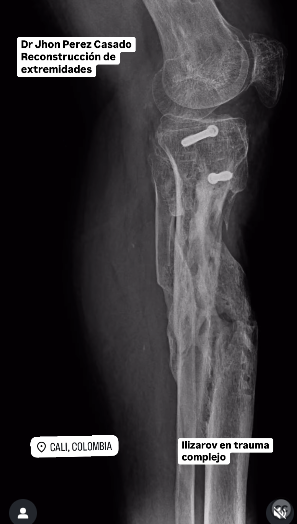
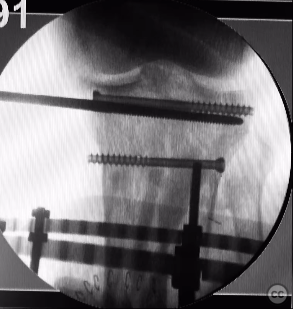
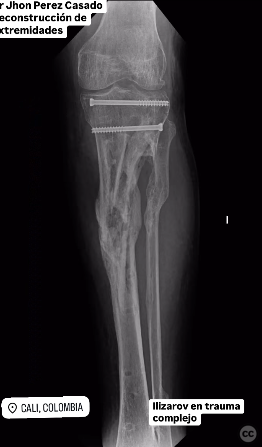
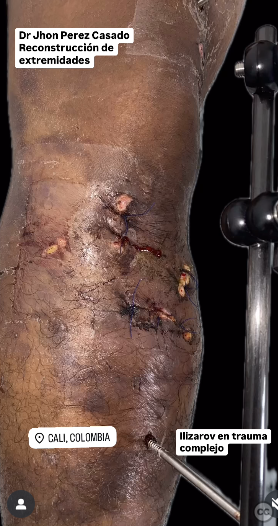
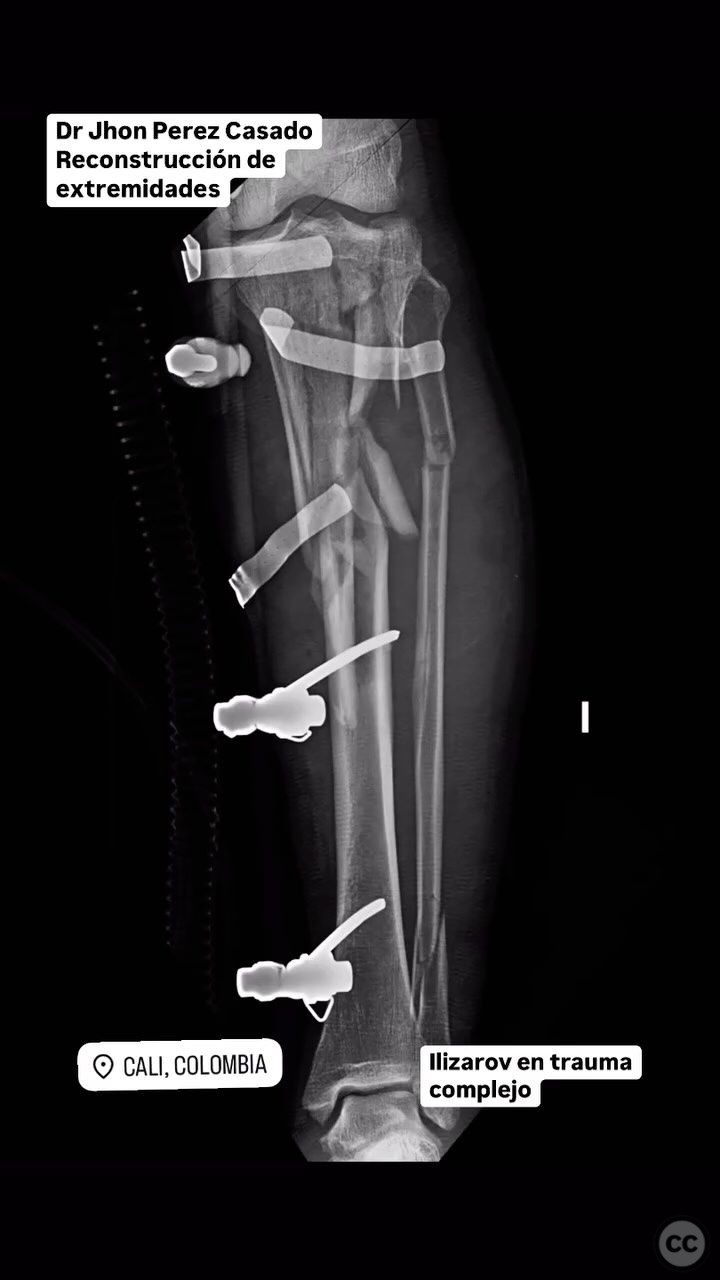
Article viewed 93 times
23 Jul 2025
Add to Bookmarks
Full Citation
Cite this article:
Perez Casado, J.J.. (2025). Complex Tibial Plateau Fracture with Arthrodiastasis Management.. Journal of Orthopaedic Surgery and Traumatology. Case Report 21189956 Published Online Jul 23 2025.